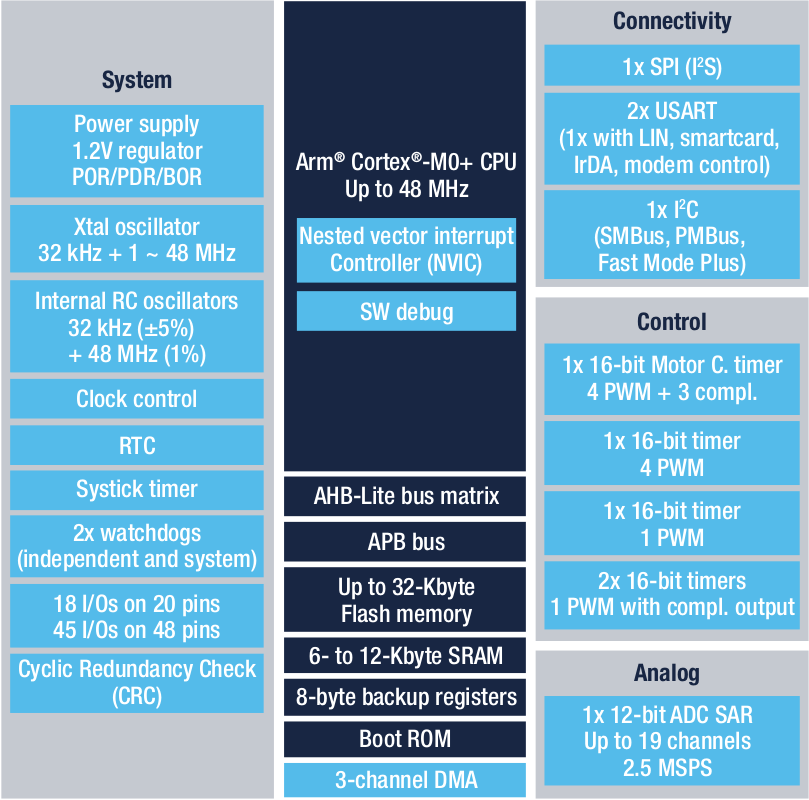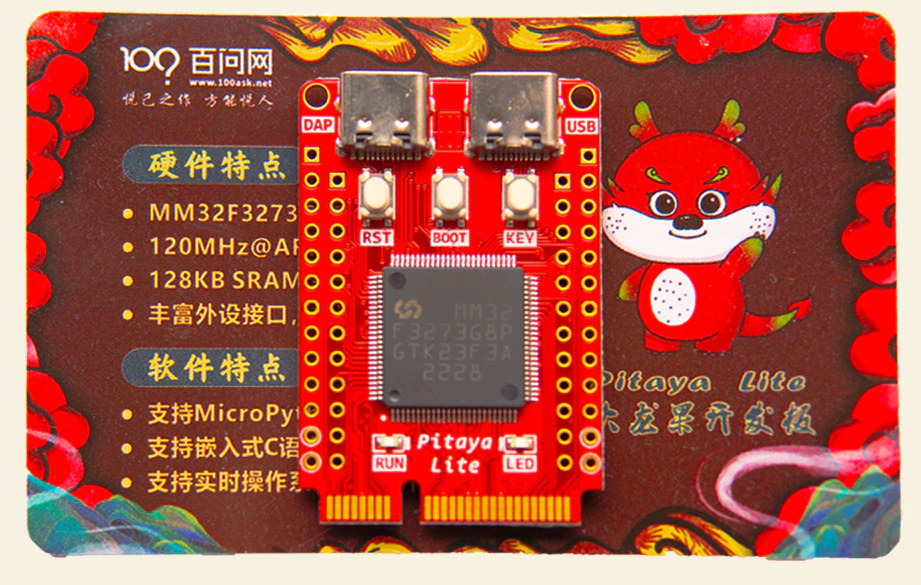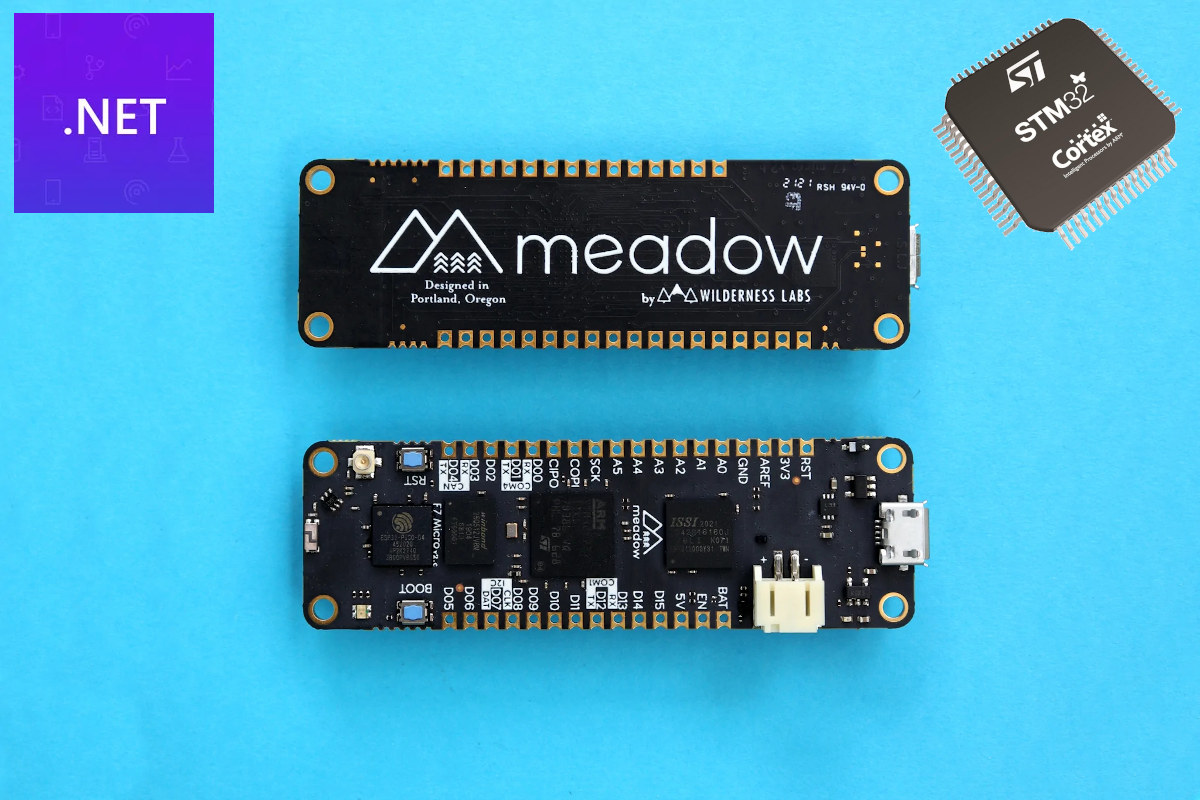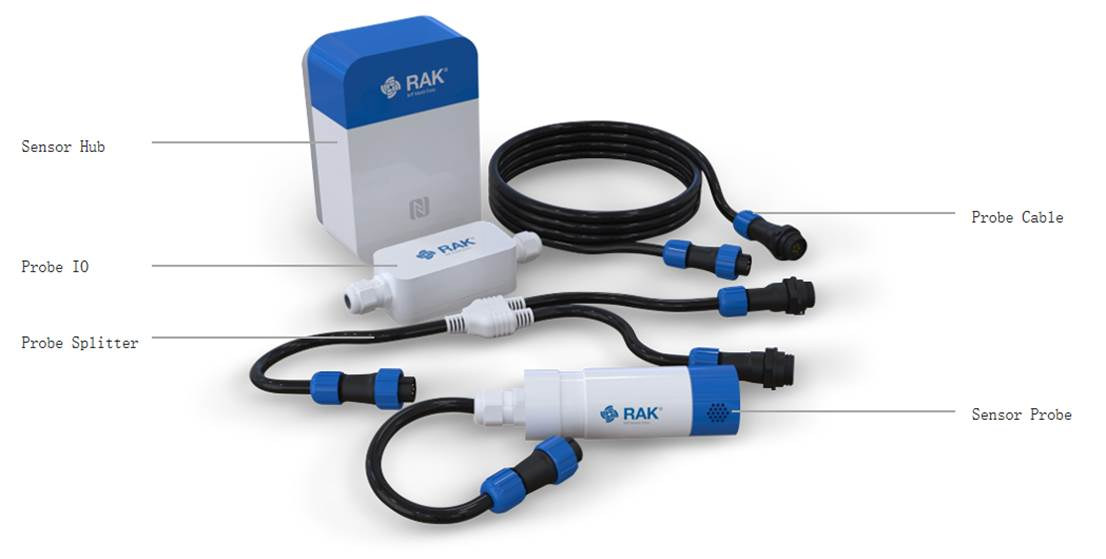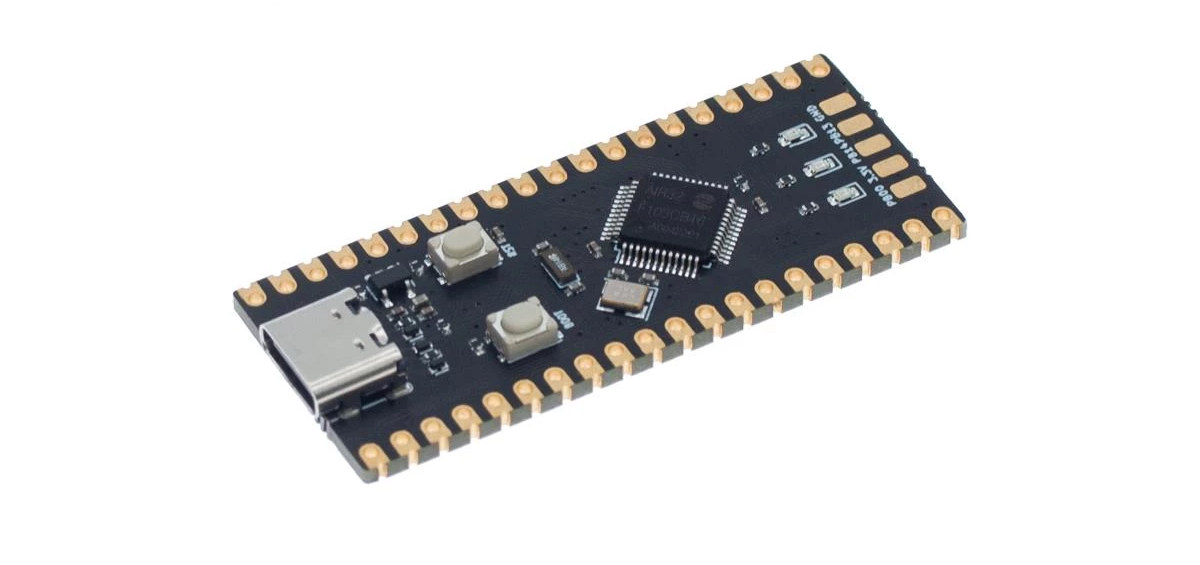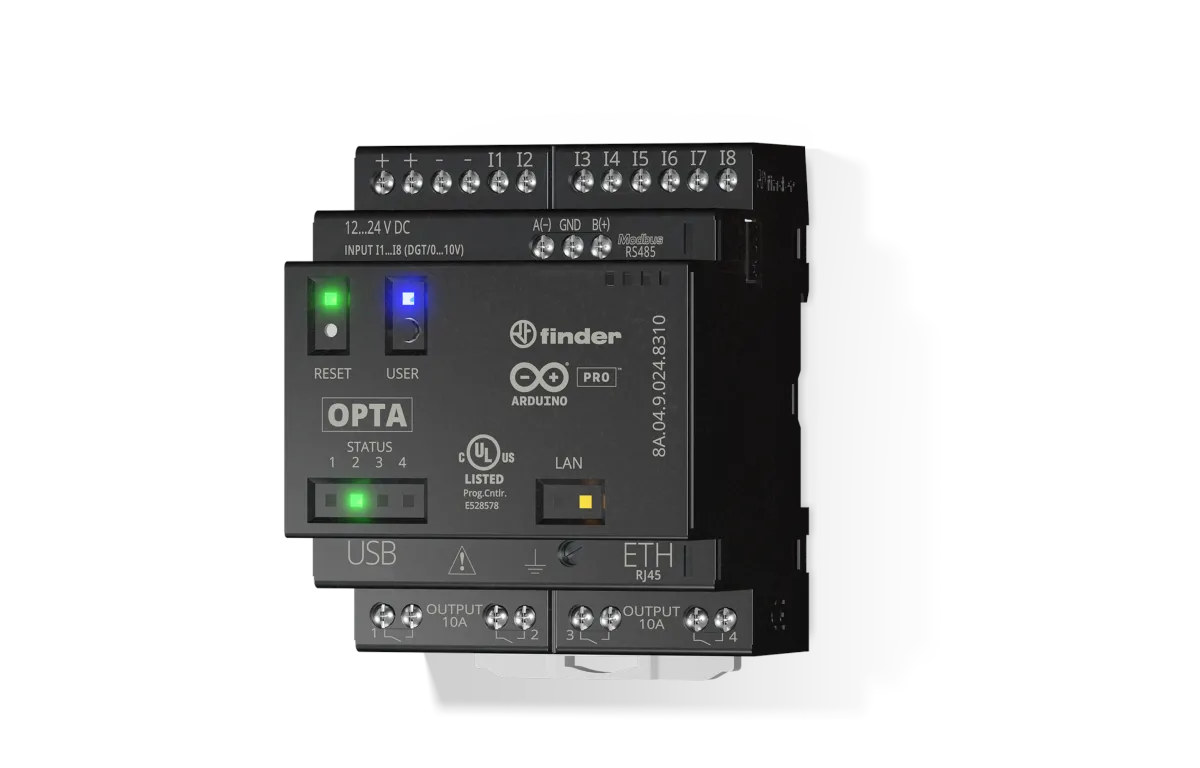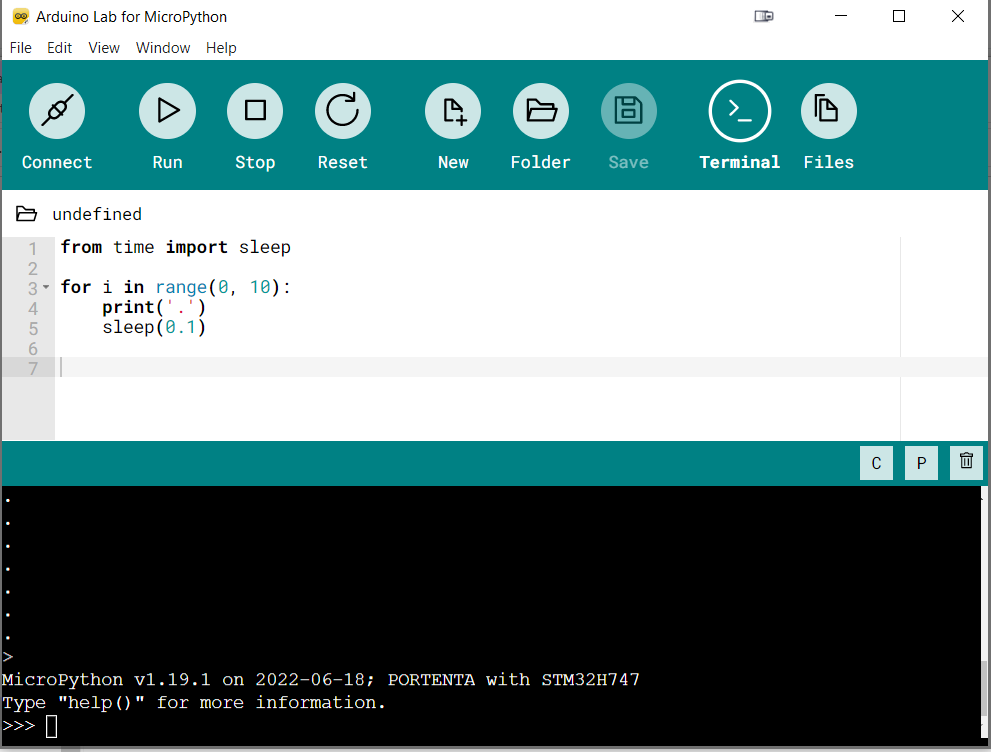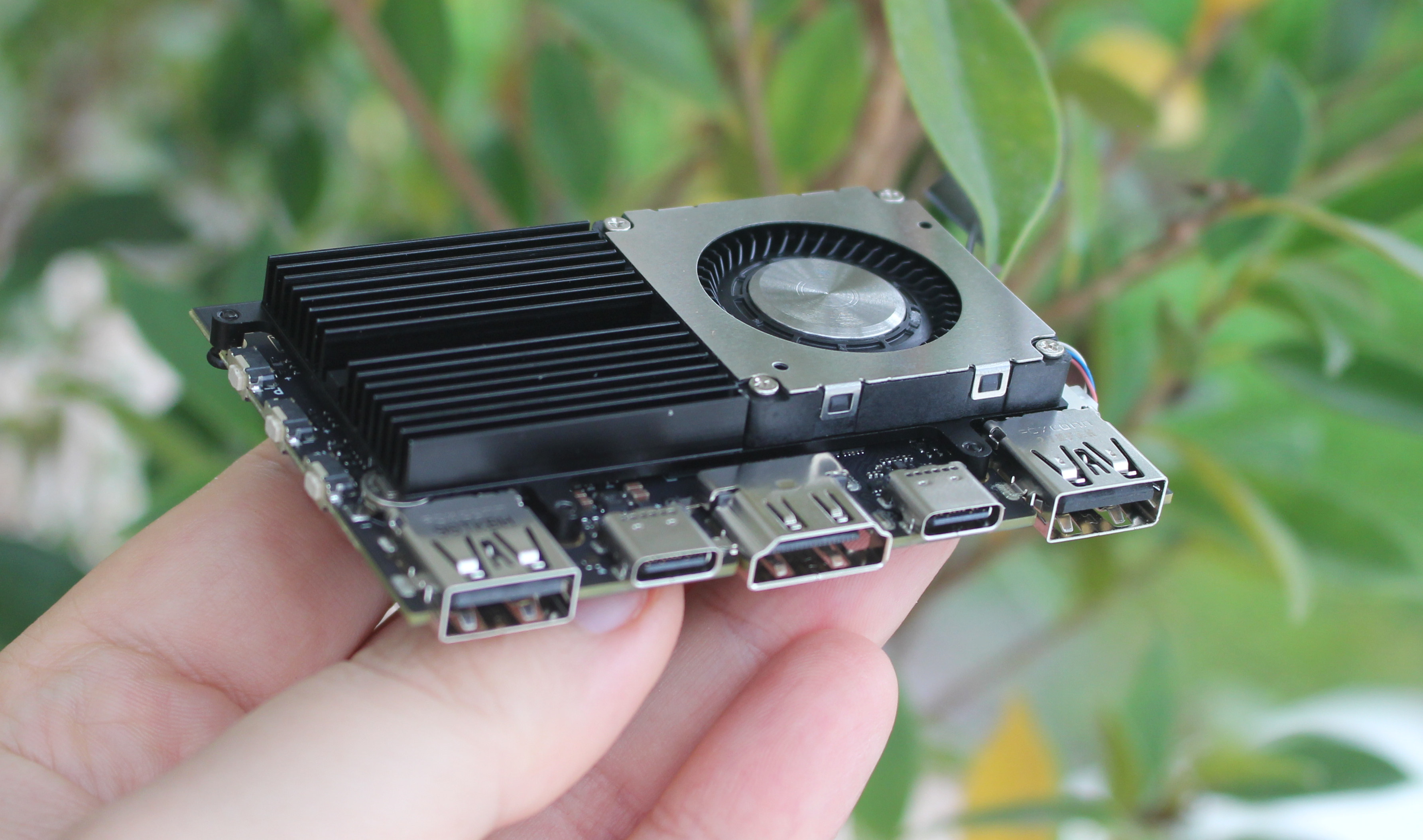8-bit MCUs are still found in many designs, but with the new low-cost 48MHz STM32C0 32-bit Arm Cortex-M0+ microcontroller, STMicroelectronics aims to displace 8-bit microcontrollers thanks to “a limited impact on the cost structure” and the improved support provided by the STM32 ecosystem. The cheapest ever STM32 microcontroller offers up to 32 KB flash, 6 or 12 KB RAM, and I/O interfaces such as UART, I2C, SPI, 12-bit ADC, and so on. The STM32C0 MCUs are available in 8- to 48-pin packages such as WLCSP12, UFQFPN, and the ridiculously tiny 1.70 x 1.42 mm WLCSP12 package. STMicro STM32C0 key features and specifications: MCU Core -Arm 32-bit Cortex-M0+ CPU @ up to 48 MHz Memory – 6KB (STM32C011x4/x6) or 12KB (STM32C031x4/x6) SRAM with HW parity check Storage – 32KB flash with protection Peripheral interfaces Up to 45x fast I/Os some of which are 5V tolerant; Note: up to 18x fast I/Os […]
$4 DshanMCU Pitaya Lite board comes with MM32 Arm Cortex-M3 microcontroller
DshanMCU Pitaya Lite is an MCU development board based on yet another STM32 alternative: MindMotion MM32 Arm Cortex-M3 microcontroller that is said to be compatible with STM32. The MCU can be clocked at up to 120 MHz, embeds 128KB SRAM, 512KB flash, and the board offers two USB Type-C ports for USB and DAP debugging, a MicroSD card slot, a few buttons, I/Os are routed via through holes as well as a mini PCIe connector that can be used to connect a display. Pitaya Lite specifications: MCU – MindMotion Microelectronics MM32F3273G8P Arm Cortex-M3 microcontroller @ 96MHz (standard) to 120MHz (max) with 128KB SRAM, 512kB Flash; LQFP100 package Storage – MicroSD card Display – Via mini PCIe port with FSMC (Flexible Static Memory Controller), supports Intel 8080 LCDs USB – 2x USB Type-C ports, including one for DAPLink and serial access Expansion – 2x 25-pin GPIO headers and Mini PCIe connector […]
Meadow F7v2 Feather STM32F7 MCU board supports .NET, C# programing
Wilderness Labs Meadow F7v2 Feather is an STM32F7 Arm Cortex-M7 development board following the Adafruit Feather form factor and programmable with C# through a lightweight implementation of the .NET framework. We had previously seen the .NET Framework running on Android and Linux thanks to Xamarin’s Mono, but I don’t think I had ever a microcontroller-class board supporting the .NET framework and C# programming. But that’s exactly what the Meadow F7v2 Feather does. Meadow F7v2 Feather specifications: MCU – STMicro STM32F7 Arm Cortex-M7 microcontroller @ 216 MHz with 2D graphics and JPEG accelerators Memory – 32MB RAM Storage – 64MB flash Connectivity – 2.4 GHz WiFi and BLE (ESP32) with onboard and external u.FL antennas USB – 1x Micro USB port for power and programming Expansion with through and castellated holes with up to 25x GPIO, 12x PWM, 6x analog inputs, 2x DAC, I2C, I2S input/output, SPI, UART, CAN Bus Misc […]
RAK2560 WisNode LoRaWAN & BLE Sensor Hub ships with a choice of sensor modules
RAKwireless RAK2560 WisNode Sensor Hub is a modular sensor gateway based on the RAK4630 WisDuo Stamp module with Nordic Semi nRF52840 Bluetooth 5.0 LE MCU and Semtech SX1262 LoRa/LoRaWAN transceiver and equipped with two sensor probe ports to connect a range of sensors. It ships with various sensors from a temperature and humidity sensor to a water level sensor, and is designed for outdoor operation with an IP66 design, waterproof probe connectors, and the ability to support a solar panel as the power source. RAK2560 WisNode Sensor Hub specifications: Core module – RAK4630 WisDuo Stamp Module with LoRa/LoRaWAN and BLE 5.0 connectivity through nRF52840 MCU and SX1262 radio chip Wireless Connectivity BLE – Bluetooth LE 5.0 with Long Range and High Speed (2 Mbps) support LoRaWAN – Full LoRaWAN band support, high-efficiency embedded LoRa antenna 860~930 MHz Cellular IoT – Optional RAK5860 NB-IoT module NFC tag for power on and […]
Air32F103 is a clone of STM32F103 clocked at up to 216 MHz
Air32F103 is yet another clone of the STM32F103 microcontroller that can be faster if needed with a clock of up to 216 MHz instead of 72 MHz for the original STMicro STM32 Arm Cortex-M3 microcontroller. The first SKU of the family is the Air32F103CBT6 whose peripherals and hardware design are compatible with equivalent STM32F103CBT6 parts and offered with 32KB RAM and 128KB flash. There’s also a Bluepill-like development board, but with a different pinout, made by LuatOS. Documentation for the board and microcontroller can be found in a Wiki including the MCU datasheet that indicates models with 256KB flash and 64KB SRAM (Air32F103CCT6) and 96KB SRAM (Air32F103RPT6). Since the wiki is in Chinese only, you may want to head over a post in English on Chowdera to learn how to get started with the Keil IDE using code hosted on Gitee. The chip and board were also spotted on EEVBlog […]
Arduino Opta is a micro PLC for industrial IoT applications
Arduino has recently announced the Opta micro PLC with industrial IoT capabilities adding yet another solution to the Arduino Pro family. Arduino used to focus on the hobbyist crowd, but with the launch of the Arduino Pro family in 2020 starting with the Portenta H7 board, the company switched its main focus to the more profitable enterprise market. Since then they’ve launched several other boards designed in-house, and last year started collaborating with the introduction of the Arduino WisGate Edge LoRaWAN gateways based on RAKwireless hardware. The Arduino Opta is another one of those collaborations as it was designed together with Finder, who calls their devices PLR (Programmable Logic Relays). Arduino Opta key features and specifications: MCU – STMicroelectronics STM32H747XI microcontroller with 1x Arm Cortex-M7 core up to 480 MHz, 1x Arm Cortex-M4 core up to 240 MHz, 2MB flash, 1MB SRAM (as found in all Portenta H7 boards, and […]
Arduino Lab for MicroPython – An experimental cross-platform MicroPython IDE for Arduino boards
Arduino boards have traditionally been programmed with C-like language in the Arduino IDE, but with the Arduino Lab for MicroPython, Arduino added MicroPython to several official Arduino boards. In the words of the Arduino Team, “not an official product yet, an experimental tool”, but I would not be surprised if it becomes an official IDE eventually as the company collaborated with Damien George, the creator of MicroPython, to port the official the virtual machine to a number of Arduino products, and Murilo Polese to develop the Arduino Lab for MicroPython cross-platform IDE for MicroPython. The IDE looks familiar… Oh yes, I see it now, it’s basically the Arduino IDE, but for MicroPython… 😉 and many of the same features including supporting connection with a board, code upload, file transfer, plus a Python-specific interactive REPL shell. Arduino Lab for MicroPython features so far: MicroPython’s Read Eval Print Loop (REPL) Enter […]
Khadas Edge2 ultra thin SBC is powered by Rockchip RK3588S processor
As noted in the Khadas VIM1S announcement, the company is also preparing to launch the Khadas Edge2 single board computer with a Rockchip RK3588S octa-core Cortex-A76/A55 processor and a thickness of just 5.7mm (before a low-profile heatsink is installed). The new board follows a similar form factor as the original Khadas Edge board powered by a Rockchip RK3399 processor, except the edge connector is gone, so it can’t be used as a system-on-module anymore, but remains the thinnest and one of the most powerful Arm SBCs so far. Khadas Edge2 Basic/Pro specifications: SoC – Rockchip RK3588S CPU – Octa-core processor with four Cortex-A76 cores @ 2.25 GHz, four Cortex-A55 cores @ 1.8 GHz GPU – Arm Mali G610MC4 GPU AI accelerator – 6TOPS NPU VPU 8Kp60 10-bit H.265 decoder, 4Kp60 AV1 video decoder 8Kp30 H.264/H.265 video encoder MCU – STMicro STM32G031K6 Arm Cortex-M0+ microcontroller @ 64 Mhz for power management […]


